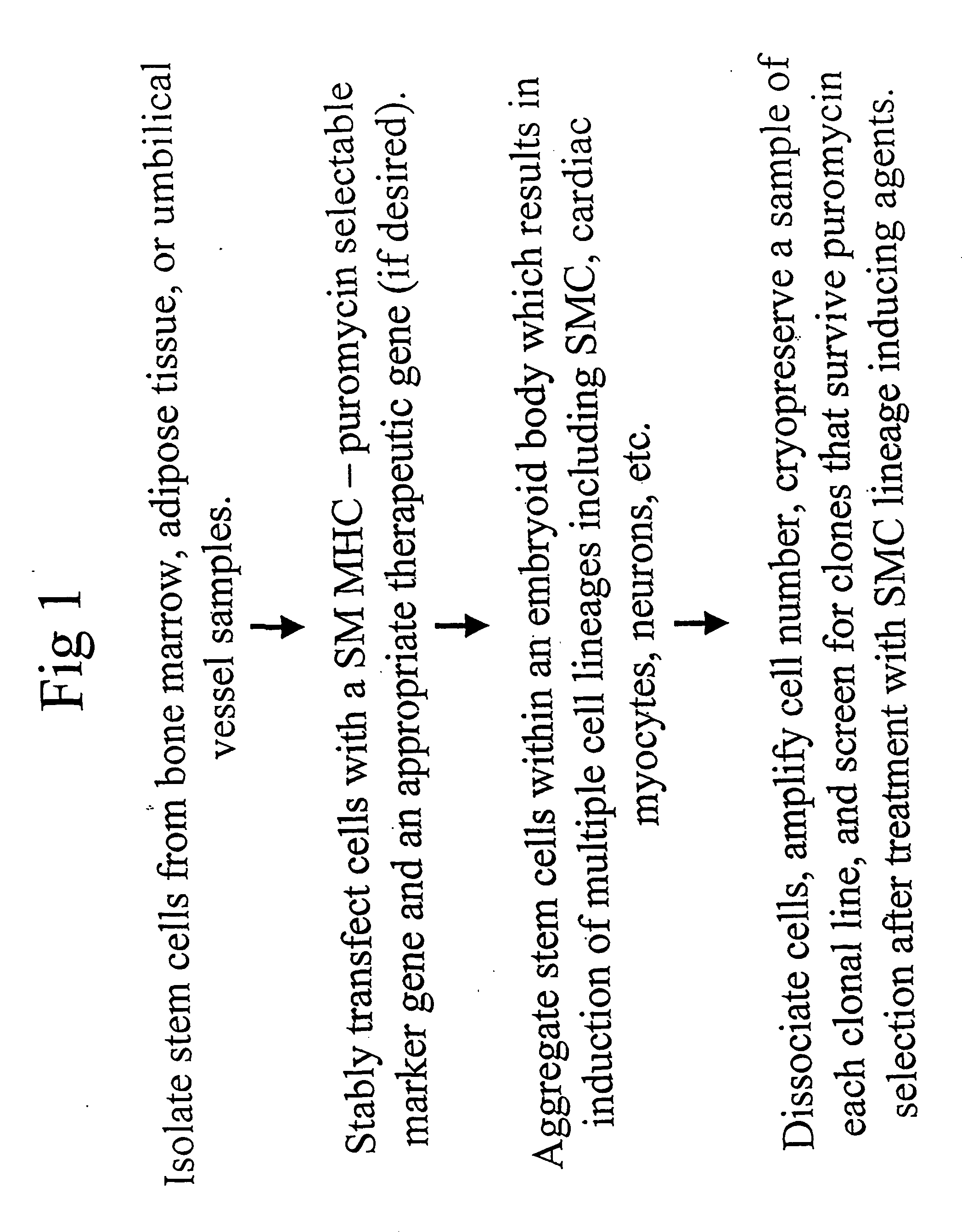Method for identifying and purifying smooth muscle progenitor cells
a technology of smooth muscle and progenitor cells, applied in the field of identifying and purifying smooth muscle progenitor cells, can solve the problems of inefficient production, a large number of limitations of existing methods, and the inability to obtain purified populations, etc., to achieve high throughput mixed peptide mass, promote vascular development, and promote differentiation.
- Summary
- Abstract
- Description
- Claims
- Application Information
AI Technical Summary
Benefits of technology
Problems solved by technology
Method used
Image
Examples
example 2
[0117] Induction of SMC Lineages in Multipotential Embryonic Stem Cells within Embryoid Bodies Treated with Retinoic Acid Plus Dibutyryl (db) cAMP
[0118] Embryonic stem cells exhibit nearly unlimited renewal capacity while being able to maintain a pluripotential state and so possess tremendous potential in a wide variety of tissue engineering applications. Cultivation of ES cells in aggregates, known as embryoid bodies, is required in order for them to display their full differentiation capacity in vitro. As embryoid bodies, these cells recapitulate many of the events of early embryonic development, including development of the three embryonic germ layers and have the potential to form a wide variety of differentiated cell types. Specifically, this system displays many aspects of vascular development including blood island formation vasculogenesis and angiogenesis. Of relevance to this invention, Drab et al., Faseb Journal 11:905-915 (1997) have presented evidence for induction of SM...
PUM
| Property | Measurement | Unit |
|---|---|---|
| nucleic acid sequence | aaaaa | aaaaa |
| antibiotic resistance | aaaaa | aaaaa |
| stability | aaaaa | aaaaa |
Abstract
Description
Claims
Application Information
 Login to View More
Login to View More - R&D
- Intellectual Property
- Life Sciences
- Materials
- Tech Scout
- Unparalleled Data Quality
- Higher Quality Content
- 60% Fewer Hallucinations
Browse by: Latest US Patents, China's latest patents, Technical Efficacy Thesaurus, Application Domain, Technology Topic, Popular Technical Reports.
© 2025 PatSnap. All rights reserved.Legal|Privacy policy|Modern Slavery Act Transparency Statement|Sitemap|About US| Contact US: help@patsnap.com


